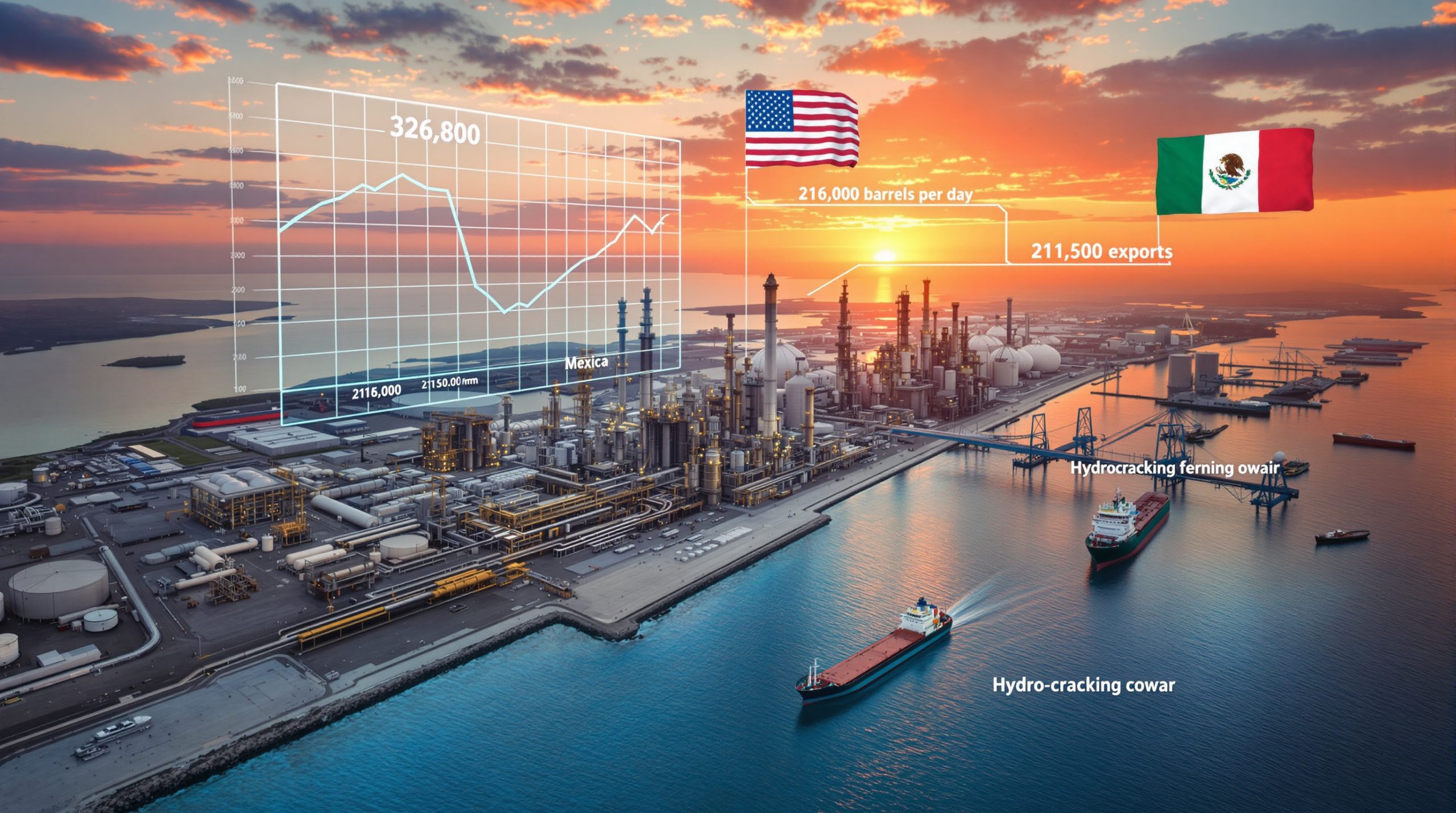What's Driving the Latest Coke Price Hikes?
Steel mills in Hebei and Shandong provinces have accepted the first round of coke price increases amounting to 50-55 yuan/mt, effective July 17, 2025. This price adjustment marks a significant shift in the ongoing negotiation dynamics between coke producers and steel manufacturers in China's key industrial regions.
The acceptance of these price hikes didn't happen in isolation but reflects a carefully calibrated response to evolving market conditions that have strengthened the position of coke suppliers in recent weeks.
Steel Mill Acceptance of Price Increases
The coke price hikes in Hebei and Shandong of 50-55 yuan/mt represents the first successful price adjustment in the current market cycle. Steel mills, which typically resist such increases to protect their margins, have acknowledged the legitimacy of suppliers' cost pressures this time around.
Several factors contributed to this acceptance:
- Supply-side constraints have reduced negotiating leverage for steel producers
- Moderate profit margins at steel mills provided sufficient buffer to absorb the increase
- Production schedules necessitating consistent coke supply to maintain blast furnace operations
- Market anticipation of further potential increases creating urgency to secure current supply
As one Tangshan-based procurement manager noted, "The current price adjustment reflects market realities we can't ignore if we want to maintain consistent production levels through the summer."
Supply-Side Factors Supporting Price Increases
The coke market has experienced a notable tightening of supply fundamentals, creating the conditions necessary for successful price implementation:
- Declining inventory levels at coking enterprises due to high downstream purchasing enthusiasm
- Limited coking coal supply from mines facing production constraints
- Restocking activities by some coke producers following price increase announcements
- Strong cost support from raw material markets creating upward pressure
Industry data shows a continuous pullback in coke inventories at coking plants across both provinces, with some facilities reporting their lowest stock levels in 2025. This inventory reduction creates genuine supply concerns for steel producers who must maintain consistent blast furnace operations.
The supply constraints are further compounded by ongoing production limitations at key mining operations. Environmental inspections and safety protocols have restricted output at several important coking coal mines, with some facilities yet to resume full production capacity.
How Are Current Coke Prices Positioned in the Market?
Understanding the absolute and relative positioning of current coke prices provides crucial context for analyzing the recent increases and projecting future market movements in Hebei and Shandong.
Premium Metallurgical Coke Price Benchmarks
The current national price benchmarks for metallurgical coke vary significantly based on quality specifications and processing methods:
| Coke Type | Quenching Method | National Average Price (yuan/mt) |
|---|---|---|
| Premium Metallurgical | Dry Quenching | 1,440 |
| Premium Metallurgical | Wet Quenching | 1,120 |
| Quasi-Premium Metallurgical | Dry Quenching | 1,300 |
| Quasi-Premium Metallurgical | Wet Quenching | 1,030 |
These price differentials highlight several important market dynamics:
- A significant premium (approximately 28.6%) exists for dry quenching versus wet quenching methods for premium-grade material
- The quality spread between premium and quasi-premium grades averages about 140 yuan/mt when comparing similar quenching methods
- The recent 50-55 yuan/mt increase represents a 3.5-3.8% rise for premium dry-quenched coke
Dry quenching technology commands higher prices due to superior product characteristics, including greater coke strength, lower moisture content, and better environmental performance. Steel mills typically prioritize higher-quality coke for blast furnace operations where stability and efficiency are paramount.
Regional Coking Coal Price Indicators
Raw material costs significantly influence finished coke prices, with coking coal representing the primary input cost for producers. Current regional benchmark prices show:
- Linfen low-sulfur coking coal: 1,210 yuan/mt
- Tangshan low-sulfur coking coal: 1,230 yuan/mt
This 20 yuan/mt regional differential reflects transportation logistics, local supply-demand balances, and quality variations. The Tangshan premium is particularly notable given its proximity to major steel production hubs, reducing the need for long-distance transportation.
Coke producers typically require approximately 1.3-1.4 tons of coking coal to produce 1 ton of metallurgical coke, meaning raw material costs represent roughly 75-80% of the final coke price. This cost structure explains why coking coal supply constraints directly translate to upward pressure on coke prices.
What's Supporting Sustained Coke Market Strength?
The coke market in Hebei and Shandong demonstrates remarkable resilience, with several underlying factors supporting continued strength despite challenging macroeconomic conditions.
Steel Production Dynamics
Hot metal production at steel mills has been fluctuating at historically high levels throughout 2025, creating consistent demand for metallurgical coke as an essential input for blast furnace operations. This production stability provides several key supports for the coke market:
- Consistent consumption patterns allowing coke producers to optimize production planning
- Predictable offtake agreements reducing commodity market volatility
- Rigid demand requirements that cannot be easily substituted or reduced
Steel mills currently operate with moderate profit margins, providing sufficient financial flexibility to accommodate reasonable input cost increases without disrupting production schedules. This profit buffer has been instrumental in facilitating the acceptance of the recent coke price increases.
"When blast furnaces are operating at high capacity utilization rates, the opportunity cost of inadequate coke supply far exceeds the impact of moderate price increases," explains an industry analyst familiar with operations in Hebei province. "Maintaining production continuity becomes the priority."
The technical requirements of blast furnace operations create inelastic demand for coke, as reducing coke rates below optimal levels risks operational instability, reduced productivity, and potential damage to furnace refractory linings. This technical reality gives coke suppliers increased pricing power during periods of tight supply.
Improving Downstream Conditions
Beyond the immediate steel mill demand, broader market conditions are creating a supportive environment for coke producers:
- Recovery in finished steel demand from construction and manufacturing sectors
- Delivery urgency with some mills actively requesting accelerated shipments
- Balanced market fundamentals supporting price stability with an upward bias
- Seasonal construction activity entering a traditionally strong period
The recovery in downstream steel consumption creates a pull-through effect that stabilizes the entire supply chain from raw materials to finished steel products. As steel inventories at mills and distribution centers have normalized, production scheduling has become more predictable, benefiting upstream suppliers like coke producers.
Industry participants note that some steel mills are actively urging coke deliveries to maintain production schedules, indicating genuine supply tightness rather than speculative purchasing. This delivery urgency serves as a reliable indicator of market strength and validates the fundamental support for recent price increases.
How Are Raw Material Markets Influencing Coke Prices?
Raw material dynamics play a crucial role in determining coke price movements, with coking coal representing the most significant input cost factor for producers in Hebei and Shandong.
Coking Coal Supply Constraints
The coking coal market is experiencing several supply-side limitations that directly impact coke production economics:
- Production restrictions at certain mines due to environmental and safety inspections
- Delayed resumption of operations at facilities previously idled for maintenance
- Limited spot availability of premium grades needed for high-quality coke production
- Transportation bottlenecks affecting timely delivery from distant mining regions
These supply constraints have triggered a strategic response from coke producers, with many actively restocking inventories following the announcement of price increases. This restocking activity has further tightened the coking coal market, driving up prices for specific coal types and creating a self-reinforcing cycle of cost pressure.
According to market participants, the confirmed coke price hikes in Hebei and Shandong have boosted sentiment throughout the raw material supply chain, encouraging speculative purchasing beyond immediate production needs. This psychological factor amplifies the impact of physical supply constraints.
The timing of mine production resumption remains uncertain, with regulatory approvals and inspection processes creating unpredictable delays. This uncertainty adds a risk premium to current pricing and incentivizes precautionary inventory building by both coke producers and steel mills.
Cost Structure Analysis
The economics of coke production create a direct transmission mechanism from coking coal prices to finished coke markets:
Coking Coal Cost + Conversion Cost + Margin = Coke Price
With coking coal representing approximately 75-80% of the total cost structure for coke production, price movements in coal markets inevitably flow through to finished coke. The current situation demonstrates classic cost-push inflation dynamics, where upstream raw material constraints force price adjustments throughout the value chain.
A detailed cost breakdown for premium metallurgical coke production reveals:
| Cost Component | Approximate Share | Impact on Recent Price Increase |
|---|---|---|
| Coking Coal | 75-80% | Primary driver through supply constraints |
| Energy | 8-10% | Secondary factor with stable contribution |
| Labor | 5-7% | Minimal impact in current market |
| Maintenance | 3-5% | Consistent baseline cost |
| Environmental Compliance | 3-5% | Growing influence through regulatory requirements |
This cost structure explains why coke producers have limited ability to absorb coking coal price increases without corresponding adjustments to their selling prices. The recent 50-55 yuan/mt increase represents a rational response to the changed cost environment rather than opportunistic pricing.
What's the Market Outlook for Coke Prices?
The evolving dynamics in Hebei and Shandong's coke markets point toward continued strength, with several indicators suggesting potential for additional price movements in the near term.
Short-Term Price Projections
Based on current market fundamentals, industry analysts project that the coke market will maintain its strength through at least the third quarter of 2025. The acceptance of the first price increase round has established a psychological floor and potentially opened the door for additional adjustments if underlying conditions remain supportive.
Key projection indicators include:
- Strong cost support from raw material markets creating a solid price floor
- Sustained fundamental improvements in the supply-demand balance
- Bullish market sentiment following acceptance of the first price increase
- Seasonal strength typical during peak construction periods
Market participants should anticipate the possibility of a second round of price increases in the range of 40-50 yuan/mt if current supply constraints persist and steel mill operations remain stable. However, this projection assumes continued moderate profitability in the steel sector to absorb additional input costs.
Disclaimer: These price projections represent analysis based on current market conditions and should not be considered guaranteed outcomes. Market participants should conduct their own analysis and risk assessment before making commercial decisions.
The timing of any subsequent price increase attempts will likely depend on the stability of the first round implementation and continued evidence of tight supply conditions. Historical patterns suggest a typical interval of 2-3 weeks between successful price adjustment rounds during strengthening market cycles.
Factors to Monitor
Several key variables will determine the actual trajectory of coke prices in Hebei and Shandong over the coming months:
- Production resumption timeline at currently constrained mining operations
- Changes in steel mill profit margins affecting procurement capacity
- Seasonal demand patterns in downstream steel-consuming sectors
- Government policies regarding industrial production and environmental regulations
- Inventory accumulation rates at both coke plants and steel mills
Environmental policy implementation deserves particular attention, as increased inspection activity or new emissions requirements could further restrict production capacity and support higher prices. Conversely, any significant weakening in steel demand could quickly undermine the current price support mechanism.
Steel mill profitability serves as a critical limiting factor for coke price increases. While current margins can accommodate moderate input cost growth, excessive coke price hikes would compress margins to unsustainable levels, triggering resistance and potentially production curtailments that would ultimately reduce coke demand.
Logistics considerations also warrant monitoring, particularly as they affect the interregional movement of both coking coal and finished coke. Transportation bottlenecks or cost increases could exacerbate regional price differentials and create localized supply shortages despite adequate overall production capacity.
FAQ: Understanding the Coke Market Dynamics
What factors determine coke price movements in China?
The primary factors influencing coke prices include:
- Raw material costs, particularly coking coal prices, which represent 75-80% of production costs
- Steel production levels creating demand for coke as an essential input
- Inventory levels at both producers and consumers affecting supply urgency
- Environmental and safety regulations impacting production capacity and compliance costs
- Seasonal patterns in steel consumption driving cyclical demand fluctuations
- Transportation and logistics constraints affecting regional supply availability
- International market conditions influencing export opportunities and price benchmarks
These factors interact in complex ways, with their relative importance shifting based on market conditions. Currently, raw material costs and tight inventory levels are exerting the strongest influence on iron ore trends and prices in Hebei and Shandong.
How do coke price increases affect steel production costs?
Coke typically represents 15-20% of total steelmaking costs in blast furnace operations. A 50-55 yuan/mt increase in coke prices directly impacts steel production costs in several ways:
- Direct cost increase of approximately 7-9 yuan per ton of hot metal produced
- Margin compression if steel prices don't correspondingly rise
- Cash flow implications for high-volume steel producers
- Potential for cost-cutting in other operational areas to offset the increase
- Procurement strategy adjustments including inventory management and contract terms
Steel mills must carefully evaluate these impacts against the opportunity cost of insufficient coke supply, which could lead to production disruptions with much larger financial consequences. This cost-benefit analysis explains why mills typically accept reasonable price increases during periods of tight supply.
What is the difference between dry and wet quenching coke?
The quenching method refers to how red-hot coke is cooled after being pushed from the coke oven:
Dry Quenching:
- Uses inert gases in a controlled environment for cooling
- Preserves coke strength and reduces moisture content
- Produces higher quality coke with superior metallurgical properties
- Offers better environmental performance with reduced emissions
- Enables heat recovery for energy efficiency
- Commands a price premium of approximately 25-30%
Wet Quenching:
- Uses water spray cooling in open chambers
- Results in higher moisture content (3-5% vs. 0.3-0.5% for dry quenched)
- Produces slightly lower coke strength after reaction (CSR)
- Requires less capital investment but has higher environmental impact
- Represents the traditional and still predominant cooling method
The choice between these methods affects both the quality characteristics and the environmental footprint of the final coke product. Premium steel producers typically prefer dry-quenched coke for critical applications where consistency and performance justify the higher cost.
How do regional variations impact the coke market in China?
Regional differences create significant variations in coke market dynamics across provinces like Hebei and Shandong:
- Transportation infrastructure affects the cost and availability of both raw materials and finished products
- Proximity to steel mills influences delivery logistics and local supply-demand balances
- Environmental regulations vary in implementation stringency across regions
- Production capacity concentration creates different market structures and competitive dynamics
- Quality differentials based on local raw material characteristics and processing capabilities
- Industrial policy implementation at the provincial level affects capacity utilization
These regional factors can lead to price differentials of 30-70 yuan/mt for equivalent quality coke across different provinces, with transportation costs representing the most significant component of these variations. Understanding these regional dynamics allows market participants to identify arbitrage opportunities and optimize supply chain strategies.
Further Exploration: China's Metallurgical Market Ecosystem
For readers interested in developing a deeper understanding of the interconnected nature of China's metallurgical markets, several additional aspects deserve consideration:
- The technological evolution of coking processes toward greater efficiency and reduced environmental impact
- Vertical integration strategies being employed by major steel producers to secure raw material supply chains
- Import dependency dynamics for premium coking coal grades and their impact on domestic pricing
- Policy-driven industry consolidation and its effects on market concentration and pricing power
- Emerging alternatives to traditional coke usage in ironmaking, including mining decarbonisation benefits
These topics represent important dimensions of the evolving metallurgical landscape that will shape future market dynamics beyond the current price cycle in Hebei and Shandong's coke markets.
Market Insight: While current attention focuses on near-term price movements, the long-term structural transformation of China's steel industry toward greater efficiency and reduced environmental impact may fundamentally alter traditional coke market dynamics over the coming decade.
Understanding both the immediate price drivers and these longer-term structural factors provides market participants with the comprehensive perspective needed to navigate both current opportunities and future challenges in China's metallurgical markets. For those seeking additional analysis, recent developments in iron ore forecast and [mining industry evolution](https://discoveryalert.com.au/news/mining-industry
Looking for Breakthrough Mining Investment Opportunities?
Stay ahead of the market with Discovery Alert's proprietary Discovery IQ model, which delivers instant notifications on significant ASX mineral discoveries, turning complex geological data into actionable investment insights. Visit the Discovery Alert discoveries page to explore how major mineral discoveries can lead to substantial market returns and start your 30-day free trial today.




